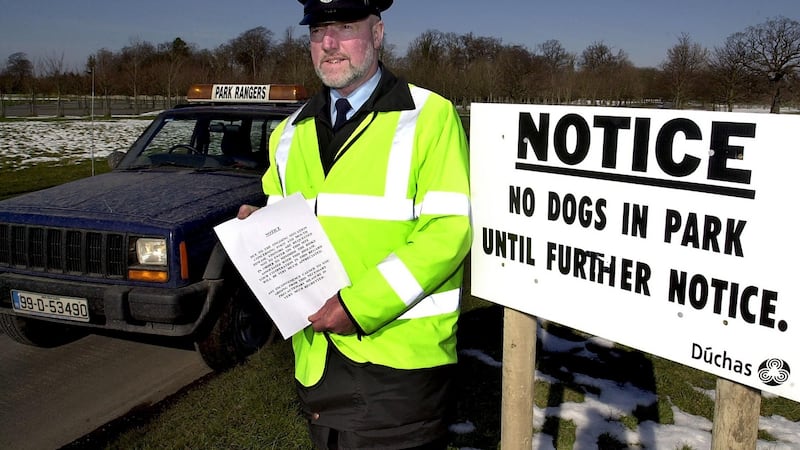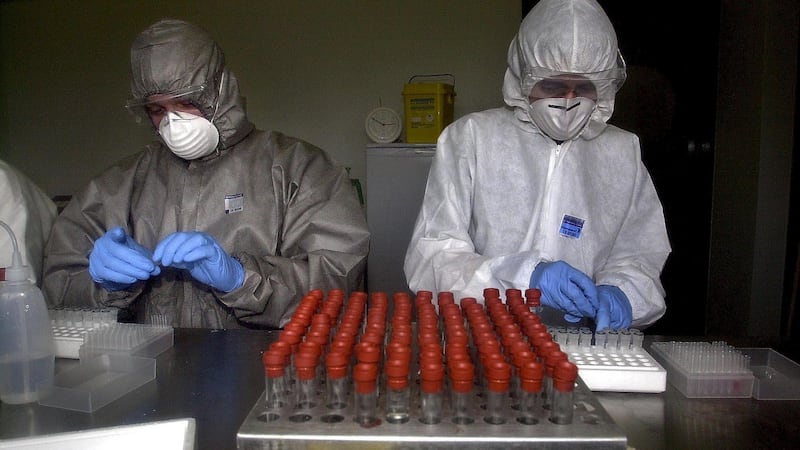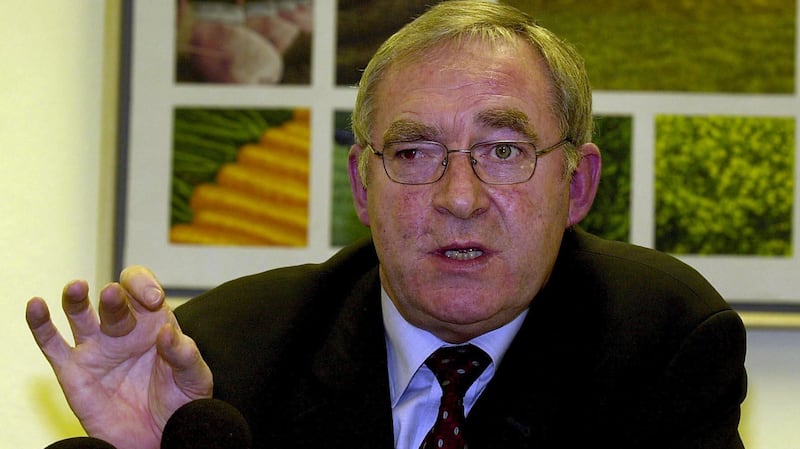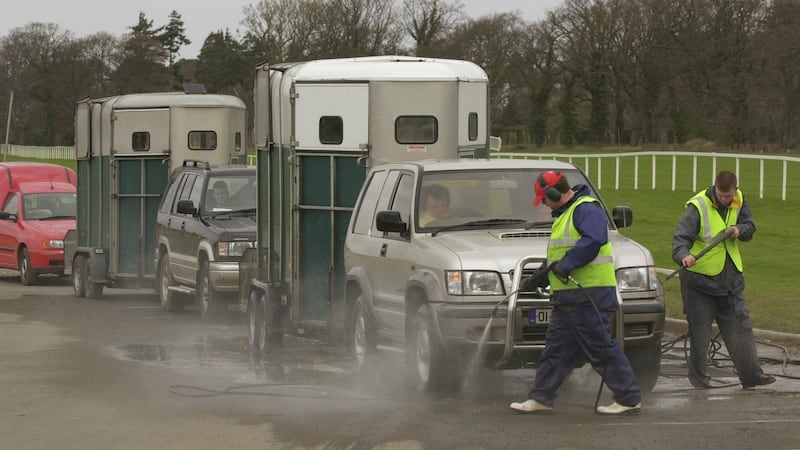The rain beat down at the foot of Slieve Foy in the Cooley Peninsula as Matthew McGreehan’s lambs and sheep were taken away on April 5th, 2001.
Distressed ewes gave birth as they were loaded on to trailers to be brought to the abattoir.
“It was traumatic, but we were told we were doing it to save the country,” recalls Mr McGreehan, who lost more than 300 sheep in the cullings ordered to stop the spread foot-and-mouth disease.
The Co Louth peninsula saw the State’s only confirmed case and Mr McGreehan remembers how the area’s usual farm animal soundtrack was replaced by a “strange silence” during those months, interrupted occasionally by the whir of helicopter blades.

“There was not a sheep or a goat to be seen or heard. The Army helicopters would fly by carrying baskets of wild animals to be shot,” the 48-year-old farmer recalls.
Fear about foot-and-mouth, which causes painful blisters inside the mouth and under the hooves of animals, had grown following the discovery of the first case during a routine inspection in an abattoir in Essex, England, on February 19th.
Within days of Britain’s first reported case, a specialist disease task force was established by the government, meeting daily under chairman and taoiseach Bertie Ahern. The parallels with the ongoing pandemic are striking.
Border checkpoints
St Patrick’s Day parades were called off; Ireland’s Six Nations games were postponed and the Cheltenham horseracing festival was cancelled after a case was found near the Gloucestershire track.
Ports and airports were closely monitored. More than 1,000 soldiers and gardaí manned 141 Border checkpoints. Vehicles and footwear were manually disinfected, meat or milk products were confiscated and live animal imports were blocked.
In a world before social media, daily press briefings were led by the then minister for agriculture, the late Joe Walsh, who was praised for the sense of calm he showed throughout.
Dealing with a long-established and highly-researched animal disease is entirely different to an emerging virus that threatens humans, says Colm Gaynor, a former chief veterinary officer at the Department of Agriculture.
“In the world of animal health, foot-and-mouth is an ever-present risk. We would have had other diseases. We had trained for it and we always had contingency plans,” he says.
Tom Parlon, former president of the Irish Farmers’ Association (IFA), learned of the outbreak while in Brussels. He flew home via Belfast because of a snowstorm in Dublin. By then, Border checkpoints were already in place.
“The lockdown was called very quickly,” he says.
Stormont and Dublin worked closely together, says former SDLP minister for agriculture Bríd Rodgers, who defied instructions from London and imposed an import ban on British animals and animal product imports into the North.
By then, however, a shipment of sheep had already arrived and moved through Armagh into the Republic. Ms Rodgers ordered another ship to turn around mid-sail, which she says was “really crucial”.
Early hopes in Britain that the outbreak had been caused by a rogue batch of infected pigs were quickly dashed. Soon, television images showed huge pyres of carcasses burning, which kept those responding to the outbreak focused.

“We didn’t know where this would go. In the UK they slaughtered over six million animals in the end. So it was a huge risk,” Mr Gaynor says.
Agriculture officials in Dublin and Belfast traced imports back to February 1st.
“It was a huge operation,” Mr Gaynor says. “Every day was a nightmare as we wondered whether we would find the animals, or not.”
Unlike Britain, which was trying to chase an already-seeded virus, the Irish authorities were “already on the pitch” by the time the first case was found on a farm in Meigh, Co Armagh, just across the Border on February 28th.
A 10km exclusion zone was quickly established. From there, the majority of the seemingly-native sheep had been transported unlawfully into the State for slaughter, it emerged. A year later, a Wicklow-born livestock dealer was convicted.
Foot-and-mouth was confirmed in the State on March 22nd, when blood samples taken from sheep on the farm of Michael Rice in Proleek on the Cooley Peninsula, just 8km south of Meigh, proved positive.

Liam Woods (80) recalls the “eerie silence” around his farm in Castletowncooley in late March when hundreds of sheep were sent for slaughter. They were not infected but were inside the exclusion zone.
His and other animals owned by affected Cooley farmers were sent to a disused abattoir owned by meat processor Larry Goodman. In all, the area lost 48,744 sheep, 1,123 cattle, 2,908 pigs, 280 deer and 166 goats.
“There wasn’t an animal about the place,” Mr Woods says. “If you go out today the crows are going ballistic at this time of the day. Back then, it was dead silent.”
Raymond O’Malley, then chairman of Co Louth IFA, remembers the emotions as lambing ewes were taken away.
“When you see grown men of 50 or 60 with tears streaming down their faces, that is something that never leaves you,” he says.
Illegal trade
Commending the Border security put in place, the Ardee farmer says “many of us wish we could do that now with the Covid”, but he concedes that it was “probably easier” to seal off the peninsula then than a 500km border today.
Even before the phrase was coined, the Department of Agriculture had contact tracers following sheep that had entered or left the State, “both legally and illegally”, and not just in Cooley, says Mr Gaynor.

The illegal trade was part of a VAT fraud, where sheep brought in were presented as being from the State. It was, he adds, a “serious risk” and huge resources went into finding them.
Ireland had to prove to the world that it was free of foot-and-mouth. Samples were taken from more than 150,000 sheep from every county from May to July. Every test was negative bar one, and that was inconclusive. That sheep, nevertheless, was slaughtered.
On September 19th, the OIE-World Organisation for Animal Health restored Ireland’s status as a country free from foot-and-mouth. Maintaining public support for months of restrictions was crucial, according to Martin Heraghty, a former adviser to Joe Walsh.
“At the time those months did feel like a very long time . . . No more than now there were various restrictions being placed on people and we needed people to co-operate. Equally, we wanted to maintain public confidence,” Mr Heraghty says.
Clear communication was key. So, too, was an alert system that drew “live” information from veterinary offices across the State, while a 24/7 helpline heard the public’s concerns.

“It was important we were fully up to speed. There was a lot happening rapidly . . . We didn’t want to have a press briefing where somebody raised something happening around the country that you weren’t aware of,” Mr Heraghty says.
Remembering the goodwill shown by cross-Border travellers, retired garda Michael Clarke, then stationed at Carrigans on Derry/Donegal border, says people were “very understanding and actually appreciative of the fact we were there”.
“We got to be on first-name terms with a lot of the farmers. At night they would be over and back to check on their livestock. We were just welcomed so much by the people there,” he adds.
Ms Rodgers remembers a Stormont of a different age, where the SDLP and David Trimble’s Ulster Unionist Party had a “vested interest” in making sure power-sharing worked because they had led the Belfast Agreement negotiations.
“Nationalist and unionist ministers worked together to the common good of everyone on the island, particularly farmers. There was never a time when anyone from the unionist side of the executive objected to what I was doing.”
Following the crisis, Walsh was honoured by the French with the Legion d’Honneur and by the Spanish with the Grand Cross of the Agricultural Order of Merit for his leadership during a dark hour. Marking his retirement as minister in 2004, Mr Ahern said the crisis had been Walsh’s “finest hour”.
The public backed tough action because the government “decided quickly and implemented quickly,” says Mr Parlon. Walsh never “lost the dressing room”, though the former IFA chief concedes that the restrictions then were a pale shadow of the ones needed today.
‘Sad time’
The costs in 2001 did not compare either. The exchequer funded €107 million of measures to prevent outbreaks, while the tourism sector suffered an estimated loss of €210 million during the first half of the year.
Later, many farmers, bar those who lost their herds, saw short-term price rises for animals because of a shortage of stock in Britain.
Mr Woods and his wife Irene never returned to shepherding, instead opting for suckler farming. Today, he prefers not to dwell too deeply on the past.
“It happened. We got on with our lives,” he says, adding that sucklers are easier to manage than sheep.
“It was a sad time but there were a lot of positives as a result as well,” he says.
“Some people became better friends but some people haven’t spoken to one another since. It brought out the worst in people and it brought out the best. We have had much worse times since then.”
However, Mr McGreehan says it took years for his new flock to get used to the Cooley’s hilly commonages.
“The compensation was very unfair: £145 per sheep. It definitely wasn’t enough,” he says. “My sheep hadn’t got foot-and-mouth. My neighbour’s sheep hadn’t got foot-and-mouth. We were asked to give them up for the greater good.”






















